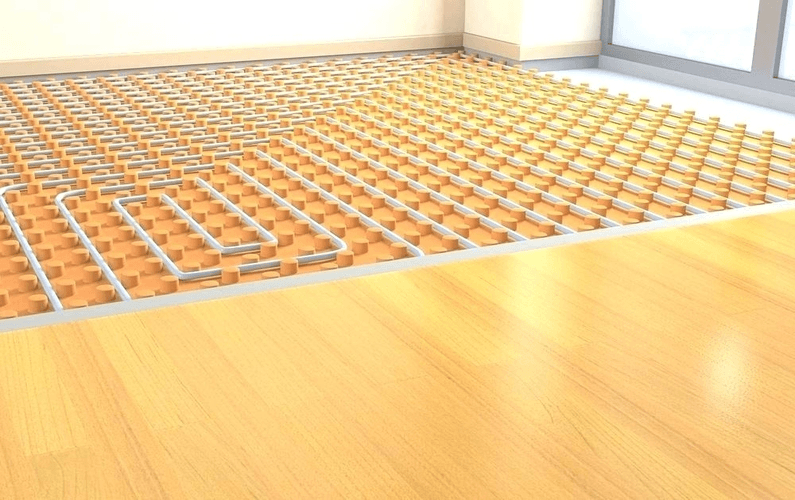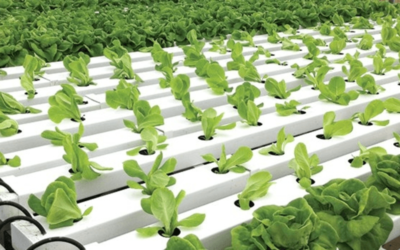

Video
Podcast
Transcript
Interview with Istvan Nyul, Kyasol Green Building Solutions
Title: Transcript of Interview with Istvan Nyul, Kyasol Green Building Solutions
Presented by: Emmanuel van der Meulen
Guest Speaker: Istvan Nyul
Date: 15 May 2017
Number of Speakers: 2
File Duration: 52:32
Transcriptionist: Jacqui Jonk
Link at the end of the transcript.
Transcript Break Down:
00:01 Introduction to Radio Live Green Smart.
01:54 What is green building?
03:36 Introduction to Kyasol Green Building Solutions.
05:17 What is hydronics underfloor heating?
09:23 How does hydronics compare to electrical underfloor heating and are there other methods?
16:38 General requirements for hydronics?
24:08 What are the different floor coverings used with hydronics?
27:26 Can hydronics be fitted anywhere else besides the floor?
33:06 Costs of hydronics?
38:19 What other features does your system provide?
52:01 Wrap Up.
00:01 Beginning of recorded material, Introduction to Radio Live Green Smart:
Emmanuel:
And I’m recording.
Welcome to Radio Live Green Smart and to our building green discussion, brought to you in association with Istvan Nyul of Kyasol Green Building Solutions. You are welcome to phone in on mobile number in South Africa 27 082 651 4273, Ill repeat that, South Africa 27 082 651 4273 or you can skype on Emmanuel.van.der.meulen, I’ll spell that (phonetic spelling follows making use of NATO phonetic alphabet) and phone in any time with questions about building green. I’m your host, Emmanuel and before we start a little bit about Radio Live Green Smart. It’s a forum to discuss green living, eco-friendly living and importantly a forum to discuss where you see any disrespect for the environment first hand. Bring such disrespect to us, we’ll assist to expose such [envir] environmental disrespect. Use contact us to send the details of the disrespect, please provide comprehensive information so it makes it easy for us to follow up. Top
01:54 What is green building?
Now a small introduction to the discussion: what is green building? [suspain] sustainable or green building design and construction is about wisely using resources to create high quality, healthier and energy efficient homes and commercial buildings, a green building is more than the sum of its parts, its process and impact also matters. Green design is about finding balance, balance between high quality construction and low environmental impact. A lighter footprint means a longer lasting planet which is a win for the builder, for the client and for the environment. Green building is a goal and a process, viewing sustainable building as a process is important because green building success isn’t just a matter of building with green materials. Green building combines both materials and processes to maximize efficiency, durability, savings (the savings is an important part) and then also a solid return on investment.
We’ll now talk to Istvan Nyul from Kyasol Green Building Solutions. Hello Istvan. Just before we start please introduce yourself and Kyasol to our listeners. Top
03:36 Introduction to Kyasol Green Building Solutions.
Istvan: Good evening Emmanuel, [um] thank you for having me here tonight, [uh] it’s an honour to be at your newly created radio show. Thank you.
Emmanuel: You are welcome Istvan.
Istvan: Yeah [um] Kyasol [um] Kyasol was [um] founded in 2010, it derived from an industrial automation company [um] the 2 founding fathers if you can call it that way are my 2 colleagues Jonathan and Frans [um] and yeah since then [um] it’s been a long journey working together with many, many companies all related to green living, green building, green houses whatsoever. [um] I myself I’m a studied engineer, a mechanical engineering, or its actually a mix of mechanical engineering and electrical engineering and [uh] I came here about 10 years ago to South Africa. I studied in Germany and I decided to live in South Africa and 1 year after founding Kyasol I joined the team and with me I brought the knowledge for [for] the underfloor heating for the entire thermal heating systems.
Emmanuel: OK [thank you] thank you for that introduction, very interesting introduction [uh] Istvan. OK so [uh] let’s go to the next topic what is hydronics underfloor heating? Can you [can you] elaborate on what that is? Top
05:17 What is hydronics underfloor heating?
Istvan: [um] many people might know how electrical underfloor heating works, that’s when wires gets laid into the screed, similar is the hydronic floor heating, only we don’t lay wires, we lay pipes, actual water pipes. It’s a multi-layer pex pipe, a plastic pipe and [uh] in there we circulate warm water. [um] that [that] heat which is carried by the warm water is then transferred into the screed and the screed transfers it into your room, essentially heating the structure of the building. Now in the screed you’ll find that during the insulation you can see it afterwards its hidden away [um] you’ll find a whole [uh] spider web of [uh] piping, but everything is without pipe crossings.
The pipe is laid at a spacing of about 100mm so every 100mm in your [yeah in your] ground structure you’ll find pipe with water circulating in it and that is done in such a way cause [the more] the more area that is covered in a building, the more heating surface you’ve got the better the [the] efficiency of the entire system. In the house, depending on the size of the house you will have [um] we call it manifolds [um] the floor we have the following problem, the length of the type is limited, we can only have a maximum length of 100 metres, 100 metres per circuit. Now in a big house you will have many circuits, can be 20/30 circuits easily [easily] so per circuit we can cover 10 square metres and if your room is for instance 30 square metres then you will need 3 circuits and in that 30 square metre room you’ll then have 300 metres of pipe, so per square metre we lay out 10 metres of pipe [um] the house is then separated into different zones so each room then has a separate thermostat and each room can then be controlled separately.
Emmanuel: OK thank you [thank you] Istvan, [um] let me just make sure I understood, is the pex pipe plastic?
Istvan: Yes, it is a plastic, so it can be bent very easily and [and uh] it is slightly less efficient than copper (Emmanuel in the background saying OK) copper is a very good conductor [um] but if you think about how much pipe is in the floor, its kilometres per house then [um] yeah, the copper would work out very expensive and the pex pipe in comparison is very cost effective, but [um yes] yes you do have a little bit less heating efficiency.
Emmanuel: OK, is that pipe reinforced at all?
Istvan: The pipe has got an aluminium layer inside, the very insert of the pipe is plastic, that is where water comes into contact with the pipe, its very smooth so the [the the] friction is very low [uh] created by the pipe, then you have a layer of aluminium which gives it stability [um] it also makes it, afterwards you can find the pipe with a pipe finder in the floor in case you want to drill somewhere [um]and another reason for that, we will talk about it a little bit later and [um] that aluminium inside the pipe is also a vapour barrier because we don’t want air to infiltrate into that closed water system, because air and water causes rust of metal parts (Emmanuel in the background says OK) and to avoid all that the pipe has [um] got an aluminium layer inside to seal it off pretty much.
Emmanuel: OK, I’m very happy that an expert would lay it, I wouldn’t know how to do that.
Istvan: It is not that complicated. Top
09:23 How does hydronics compare to electrical underfloor heating and are there other methods?
Emmanuel: OK Istvan thank you for that, let’s move on to the next one, now how does the hydronics compare to electrical underfloor heating?
Istvan: [um]the electrical underfloor heating is very responsive, so you switch it on and a half an hour later you can feel the floor is warm already, it is a little bit different here with the hydronic [um] underfloor heating system [um] because we have a much thicker screed layer on top, so there’s a bit more [um] matter to heat through first until the temperature reaches the floor and until the floor can heat the entire space, so that is the first thing one needs to have in mind, that [uh] it’s a bit slower so it takes a couple of hours after you switch it on. It takes a couple of hours that [uh] space gets warm [um] but the intention here is not to switch it on and off on demand, the intention is here to keep it running, it will regulate and control itself, it will switch the room off if the room reaches temperature or switch it on once the temperatures too low. It’s intelligent you don’t need to interfere as a user, [um] there’s a whole logic behind it to control all that.
You set your temperatures once and that’s pretty much it [um] also it’s a bit more complex then [um] electrical underfloor heating, with electric underfloor heating you have an electrical connection on the wall and [uh] the installer wires the web the [the uh] wire web to it and then you have a thermostat which switches it on or off.
11:08
Here [um] you have a heat source, this can be different things to create that heat which is then transferred into the water [um] you need [um] much more space for the entire equipment, you have pumps and valves, and an entire DB for the controls so it’s a bit more of an effort and one needs to know what is happening and what needs to happen onsite [um] to [yeah] not to lose it basically.
[um] different heat sources can for instance be [uh] a heat pump which is most popular [um uh] method of heating the [the] water which circulates in the floor [um] the heat pump [uh] the advantage of a heat pump is that [um] it can run at any time as long as there’s electricity; where the electricity comes from whether its [um] Eskom or you produce it yourself that doesn’t matter. If there’s electricity the heat pump runs. Another method of heating it is solar panels on the roof so typically you would have a tank, [uh] the tank is connected to a couple of panels on the roof and during the day the pumps will circulate the water from the tank up to panels and then back into the tank and from there the water then gets distributed into the entire house now the advantage of this method is that [um] heat generation only happens during the day when the sun is shining but most of the heating mostly happens at night [um] in order to [to] avoid tank cooling down you’ll have to have a couple of tanks and lots of panels to heat those tanks, its 2000/3000 litres and then at night you can use those tanks like a heat battery and you just draw the heat out until next morning when they heat up again.
13:08
Another method would be gas, which is [uh] very expensive, it’s still cheaper than electrical heating but its expensive compared to the other methods [um] it’s a [it’s a] gas boiler which then circulates heats the water up which then circulates through it and [um] that way you could also heat and another [um] method would be a fire place that is a special one with a built in heat exchanger where the flute gases exit so when you make a fire in the lounge for instance, you enjoy your fire in the lounge and at the same time water is circulated through the heat exchanger and then goes back to the tank and from there it gets distributed in the house. So basically you have a warm lounge through your fireplace but at the same time you heating the bedroom and bathroom on the other side, that is how the system works [um] an advantage of hydronic underfloor heating is also that you can combine sources. You can have a heat pump that covers the heating at night via electricity and you can have solar which heats the tank [uh] during the day when the sun is out so you can [um] those systems assist each other and therefore reducing the electrical demand even more. [um] the initial investment of such a system is much higher but [um] the running costs to heat the house are so much lower than electrical underfloor heating, you can say it’s about a fifth of [um] a comparable electric underfloor heating system. Which means with the electrical consumption of a geyser you could heat 200 square metres and that is when the heat pump is running flat out on a very cold day.
Emmanuel: OK [ok] so out of all these heat sources for hydronics would you say that the heat pump is probably the easier and less expensive mechanism?
Istvan: It is the easiest yes. It costs a bit more than a fire place for instance, if you use a fireplace for heating or a gas unit but then again with a fire place you need wood for it to keep it running (Emmanuel in the background: yeah) you can’t just [uh] put 1 batch in it and forget about it, you need to keep it running (Emmanuel in the background: OK) well the heat pump switches on there’s no mess, no fuss it always works, it’s a very reliable unit.
Emmanuel: OK, and also the house that we developed, by using the heat pump we could also cool the house so all year round through the hydronics, in the winter we have a heat source that will warm up the house to a [a,a] comfortable temperature and then in summer we could [uh] then cool the house down as well and that’s what the heat pump [the heat pump] will give us?
Istvan: Yeah [uh] that’s correct, those units which can cool as well are a bit more expensive (Emmanuel in the back says OK) but generally it is possible to the cool the house, whether it’s through the floor or walls or ceiling doesn’t matter (Emmanuel in the background says OK) but yes [uh] that’s correct [um]. Top
16:38 General requirements for hydronics?
Emmanuel: OK, [move] moving on then the general requirements for hydronics? Can you just cover those for us? What [what what] does it all entail?
Istvan: What I always recommend my clients who enquire about underfloor heating first think about the building, think about the efficiency of the building and then look into alternative heating or cooling methods. And that starts with [uh] very easy things like insulating the building shell, double glazing for instance, double glazing [uh] can prevent the heat from going out in winter so you keep the heat inside, in summer it keeps the heat outside. Those double-glazed windows generally are more tighter than single glazing, there’s no drought, also they shield the noise, that is a very big advantage of double glazed windows, that the noise levels drop significantly [um] so yeah one method would be double glazing then [um] insulate the roof [so there’s] if you don’t insulate your roof or your ceiling then you going to lose all your heat, might as well not heat in other words. So, the roof must be insulated [um] then [um] if you are willing to invest that additional money and also insulate the walls, so if you have [um] your double walls with the cavity [um] there are methods to insulate that cavity with insulation, that also reduces the heat flow in winter then the heat flow from the inside to outside, cause it gets stuck pretty much in the middle.
Emmanuel: Yeah, in the property that we developed we did exactly that by [uh] adding the two [uh] layers and the cavity and then we used lambda board in the cavity, which as you say then insulated both from the inside and from the outside making the wall [uh] quite a bit wider than regular double [double] walls.
Istvan: Another method would be, there’s those[um]it’s like granules which can be poured into those cavities and they also work quite nicely.
Emmanuel: OK
Istvan: Then [um] something that comes with underfloor heating is [um] the floor insulation so basically [uh] the different layers of the underfloor heated floor [um] would be if [if you look if] you take your slab and [uh] and first we install a vapour barrier, just a plastic, your USB plastic to prevent moisture from the underside from getting through to the floor heating system cause humidity is an additional heat carrier, so it will carry the heat away from the floor[um] on top of that [um] plastic we put high density polystyrene, that is a special polystyrene that is meant to go onto floors [um] the thickness of the polystyrene is round about 50mm on ground floors, on upper floors you can reduce it to 35mm for instance or 30mm and [um] and on top of that polystyrene we then put our[um] we call it the [knot panel um] the panel has two functions, firstly also another vapour barrier to prevent moisture and secondly [um] you have to imagine it a panel like [um] which is interlinked with the next neighbour like legal, and [um] through that we create like a carpet in which we lay the pipe, so we ensure that the pipes is always at the same spacing, it looks neat and straight and proper. [um] the screed will be at a thickness of about 70/80mm so that’s much thicker than for a normal screed or electric underfloor heating screed [um] its poured straight on top of the entire construction underneath [um] and closing the pipe inside [um] and [um] the 70mm basically creates a block of matter which then also stores lots of heat in case the heat pump switches off or there’s a power outage you won’t even notice its getting colder because there’s so much heat like a battery, there’s so much heat [um] stored in the screed, and yeah on top of the screed there’s your [your] final floor covering, tiles, thin carpet, [um wooden wooden um] wooden floor if you want. Ideally tiles because they also conduct heat very well just like they conduct heat away from your foot when they are cold, they conduct heat from underneath as well come to the upper side [um] but also yes carpet also works if it’s not too thick. [um] another thing which many architects seem to forget when they design and enquire about underfloor heating systems is a dedicated room for all of the equipment that can be a small room 2 metres by 3 metres, for instance, its usually big enough where all the equipment can be installed and from there we basically supply the floor with [with uh] required water and also in there we put the DB and the tank and whatever is required in order to operate the entire system. [um] duration of the installation is round about, we can install 100 – 150 square metres per week just for the floor and them [um] the utility rooms or rest of the installation is about another 2 weeks, roughly. During the installation, no one can be onsite, no other [inaudible] persons can be walking around because it’s a very clean job, it’s almost like in a hospital, sterile, so we come before we start, we vacuum the whole place, we clean because we don’t want any stones or dirt to penetrate the [inaudible] because then we might have a leakage, although leakages can be fixed afterwards [um] but yeah, it’s better to avoid it from the beginning.
Emmanuel: Ok that sounds [that sounds] very interesting, but again, [uh] highly specialised [um] Istvan just on the note of [um] the installation and the time it takes does that mean also that if it should be dust free that by now the windows are in, the ceiling is in and that you’ve got the [the] shell is completely built by now?
Istvan: Yes, that means exactly that and that would make me very happy if it always happens on all sides um] yes ideally windows, everything closed, doors are in, if it’s not possible to put the windows in then [um] those openings must be closed with plastic. (Emmanuel in the back: OK) wind and dirt and rain cannot blow through. Top
24:08 What are the different floor coverings used with hydronics?
Emmanuel: Ok, thank you for the interesting information. Right so let’s look at, you already mentioned the different floor covering [uh] can you just recap on the different floor coverings used with hydronics?
Istvan: Yes [um] many people now days also go for a polished screed, which I didn’t mention earlier. Polished screed and tiles are ideal for underfloor heating [um] because they conduct heat very well and that’s what we want to conduct the heat away from the pipe which is about 60 [cm] mm below [uh] we want to conduct that heat away to the inside of the room and then the water can go back to the heat pump and from there can heat up again. [um] but also its possible to use [um] a thin carpet or even a wooden floor, the wooden must be certified though for underfloor heating.
Emmanuel: Ok and would that wood include the laminate floors?
Istvan: That can be done as well, yes.
Emmanuel: Ok, righty.
Istvan: Generally, it’s not a big issue even with a wooden floor or carpets [um] the temperature in pipe, or the temperature of the water circulating in there is around about 35 degrees, maximum of 40 degrees, that means on the underside [um] on the upper side of your screed, on the underside of your final floor covering when you have 28/29/30 degree.
Emmanuel: Ok so any material that can last at that temperature is a possible covering?
Istvan: That is correct [that is correct] which most of the material do because in summer the sun shines, the floor gets much warmer then what it becomes during underfloor heating.
Emmanuel: Ok, before we move on, at this stage I just want to enquire, so what about expansion and contraction with the heating and the floor and all the water running through the floor. How is that catered for? Do we need to cater for that?
Istvan: Yes [um] when we install the floor, before that polystyrene goes in we cover all the surrounding walls in a [inaudible] insulation [so that] it’s a strip of insulation of flexible polystyrene which can be attached to the wall and [uh] that basically keeps when the screed is poured, that keeps the screed away from the wall so there’s always a gap between the screed and the wall, which means when the screed heats up from whatever temperature it was poured, for instance 20 degree or 25 degree to the final 35/40 degree that it can expand by 2cm on each side and that allows for the thermal expansion of it.
Emmanuel: Ok
Istvan: So, it’s floating, screed is floating in the room.
Emmanuel: Ok and any expansion joints?
Istvan: Expansion joints, yes [um] if the room gets very long, if it’s a very long room for instance bigger than 12 metres then we prefer to put expansion joints somewhere in the middle to cut it into 2 [uh] blocks pretty much. Top
27:26 Can hydronics be fitted anywhere else besides the floor?
Emmanuel: Ok, right now I want to go a little bit [uh] and think laterally, can the hydronics only be fitted to the floor or [or] do you have it in other places as well?
Istvan: [um] you mentioned earlier that the heat pump can cool as well as an add on, the heat pumps I’m usually using they [they] have it built in, either we use it or we don’t. [um] now a problem with the floor is [um] if you cool through the floor cold air is heavier than warm air which means since you cooling from underneath that air doesn’t convect upwards so it gets stuck on the floor which means [um] in the room you creating temperature layers, you [stratosphying] the air temperature from warm air on top too cold at the bottom of the floor. [um] in that case it is better to cool from the top which means using ceiling panels for instance [um] it’s the same method, it’s a dry wall panel where the pipe is laid in and [um] in summer you can cool, you circle cool water through the panel and then the cold air will fall naturally through natural convection and flood through [um and um] if you do it through the floor you can install a small fan for instance to get a little bit of circulation.
Emmanuel: Ok, so does that mean the ideal would then be for your heating you place that in the floor and then for your cooling you place that in the ceiling?
Istvan: Yes, that is correct [um] I mentioned earlier though is manifolds [um] we can add a couple of more circuits on that manifold and then have, let’s say 5 circuits for that room [uh] supplying only cold water in summer, supplying to the ceiling panels [uh] alternatively also a very nice feature would be the wall heating and cooling, so if you transfer heat through the walls its always efficient.
Emmanuel: Is this instead of the floor?
Istvan: That can be instead of the floor, as long as the floors insulated.
Emmanuel: Ok
Istvan: So, the floor must be insulated otherwise you going to lose [inaudible with Emmanuel talking]. [um] and then you just heat the walls around you, you have to cover around about 60% [um] of the floor area on the wall, up to a height of 2 metres, that gives you an idea of how big that wall heating area needs to be and that can be used then for heating and cooling very efficiently because you are surrounding your body with warmth, either low temperature warmth in [in] winter and [uh] cold in summer.
Emmanuel: Ok
Istvan: So, your body radiates either in summer into the wall to get rid of heat or you absorb heat from the wall.
Emmanuel: Ok, right and how difficult is that? That means it’s a panel that goes on top of the wall or [or] do you place the piping and then you plaster the wall?
Istvan: Yes, there are 2 options, if you build new then [um] the pipe is plastered, it’s basically a rail which gets attached to the bricks in that rail we run the piping like a snake and [uh] then on top of the piping we’ll have to have round about 20mm of screed [ag a] sorry plaster covering, which means the plaster will be on about 35-40mm thickness in total counted from the brick wall.
Emmanuel: Does that mean that piping in the wall, those rails you mentioned, would those now be the same pex or is it a different product all together?
Istvan: The rails is just to hold the pipe.
Emmanuel: Ok
Istvan: The pipe is the very same pipe which we use in the floor.
Emmanuel: Ok
Istvan: that multilayer pex pipe, but just to hold it on the wall we use those rails.
Emmanuel: Instead of those plastic, what did you call it those knobs?
Istvan: Yes.
Emmanuel: Ok, and of course the plasterer will have to know exactly what they are doing whilst they are plastering over this [uh]pipe network and to ensure the plaster wont crack?
Istvan: Yes, they plaster in 2 stages, the first layer is just to cover the pipe by 5mm roughly. And then whilst the plaster is wet, we attach a web, it’s like [uh] a mesh, it’s a mesh (Emmanuel saying Ok in the background) that mesh will then be worked into the plaster and then afterwards you can add another cm of plaster on top of it and that keeps the plaster strong.
Emmanuel: Ok and for that process do you also need the house to be dust proof and in a seal envelope whilst you are doing this? It doesn’t sound like it?
Istvan: No that is not as critical [um] it’s really just about the floor piping so that [um] it can’t get punctured [um] if the pipe is attached to the wall it’s unlikely that it gets punctured through walking over it or whatever.
Emmanuel: And then you can just have a regular floor with a regular thickness screed (Istvan in the background yes) with carpet or whatever you want to do?
Istvan: That is correct. It must be insulated underneath not to lose all the heat. Top
33:06 Costs of hydronics?
Emmanuel: Ok that’s fair enough. Right so if you now look at all these options, hydronics in the floor or in the wall for heating and cooling or in the ceiling for cooling and heating in the floor with hydronics, this sounds very complicated as to how to choose which of these should be done and the costs it sounds like it’s too complicated to even try and figure out, but I am sure you are going to help us with the costs comparatively speaking. [um] sorry Istvan and is some of this for existing housing, in other words to easily retrofit hydronics instead of building new. How does all of that come into play?
Istvan: The methods I just explained with regards to the floor heating or cooling and the wall heating are for new houses, but we also have a retrofit panel, it’s a [inaudible] panel which can be laid on top of your existing floor, the thickness of that panel is 20mm, in there we also run that piping that multilayer pex piping but its thinner instead of 16mm its only 11.7 [um] so it will raise your floor by about 20mm in total but right on top of that panel [um] you can put new tiles. You’ll have to cut doors though and generally you will lift about 20mm higher but it is possible, alternatively we also have a similar panel which is then attached to the wall instead. In there runs the piping and it’s a dry wall panel pretty much with cut outs and there runs the piping as an upgrade to an existing house.
Emmanuel: Ok so you’ve got the 2 options, we can take a conventional house and retrofit it relatively easy [um] or for a new house you’ve got the different options, and cost wise how do the costs compare?
Istvan: [um] of course if you build new it’s always cheaper cause you can plan everything right from the beginning you can have your supply piping and you can lay it whilst they casting the concrete and so on, if it has to be installed afterwards it’s always a bit more of a mission to find a loophole back into the building to install the manifold somewhere in the building [um] so it’s always cheaper to build from scratch, new. Costs for such a system, you are looking at about R1500 per square metre if it’s just heating, roughly [um] if it is a retrofit application with those panels then it’s more in the region of R2000 per square metre.
Emmanuel: Ok, and [and] when you say now the R1500 per square metre is that for your wall system or your floor or your ceiling? Just help me understand that?
Istvan: That would be for a typical floor instillation [um] what I usually also do is add in some wall heating in bathrooms.
Emmanuel: Ok, that would be nice.
Istvan: If it is a badly insulated house, cause generally in bathrooms there’s very little floor space available for the heat exchange (Emmanuel agrees in the background) so I try to cover as much as possible in the bathroom even under [under] the shower and toilet, [yeah] sometimes it’s not enough then I add some additional square metres on the wall just to get that higher temperature, in the bathroom you want 24 degrees ideally whilst in other areas 20-22 degrees.
Emmanuel: Ok [shoo] that sounds very interesting, now in terms of the wall heating and cooling or for that matter the ceiling which can be in a newly built house how does that compare in price per square metre, and how do you work the square metre is it floor square metre or wall square metre?
Istvan: The wall square metre is cheaper because there we don’t put polystyrene underneath, no vapour barrier, no knobs so the whole insulation is also much quicker because it’s really just a matter of attaching those rails on the walls and then running the pipe in there and then getting the pipe in there and back out to the manifold and then it goes back to the heat pump [um] the floor insulation is a bit more complex, all those polystyrene balls need to be cut into shapes and sizes and make sure there is no [um] hollow areas underneath because that’s going to create a drum effect when you walk, so it’s a bit more complex to do a floor insulation. [um] a house only with wall heating I haven’t done yet so mostly its floor heating and then added wall heating.
Emmanuel: In certain areas?
Istvan: Yeah Top
38:19 What other features does your system provide?
Emmanuel: Right so [so] far some of this is easy to understand some of this is complicated to understand and I’m glad that I’m not doing the installation and that an expert is doing the installation, [um] and then what can you tell us about other features that the system provides?
Istvan: We talked about the cooling and the heating which is powered by the heat pump, for an additional cost and with a little bit more effort one can add pool heating as well so if in summer the heating is not useful for heating then why not heat the pool.
Emmanuel: Ok, I’ve course so in other words the heat pump works a little bit harder and then also warms up the pool.
Istvan: I wouldn’t say it works harder, it works longer [yeah] this way you can save the heat pump for heating the pool. In summer, the heat pump is off for heating and why not use it for pool heating, a nice warm bath.
Emmanuel: Ok, even in summer to heat the pool?
Istvan: Many people heat the pool in summer.
Emmanuel: Oh, I thought it was a winter thing.
Istvan: Well in winter I wouldn’t heat the pool anyway cause the losses are too high and the heat pump won’t be able to keep up, it’s a waste you want it to be efficient and heating the pool in winter is just a waste.
Emmanuel: Ok so for pool heating in winter better use the [the] method where you’ve got [the] something lying on the roof that will cycle the suns heat into the pool?
Istvan: Those, yes, those panels are very cheap, if the pool pump is running then it will heat somewhat, whether they can make up for the losses at night that is another question. I think it’s just a matter of how many panels you’ve got on the roof. For instance, in-between [in between] winter and summer that time when the sun is not strong enough to heat the pool yet and the heat pump as an additional source. But here ideally again the pools walls are insulated towards the ground, water has a very good heat storage, but it also conducts heat very well away. The walls are insulated as well as a pool cover should be installed just to lower the losses at night.
Emmanuel: So, to include the hydronics or the heat pump for the pool you would have to, as you said now insulate the pool, that means it should be part of the ground up building of the pool, included in the design did I understand correctly?
Istvan: Yes, they should be included in the design already so if a client is interested in pool heating via that same heat pump then I will also give recommendations of what to do and how to make the system more efficient.
Emmanuel: Ok, any other features that the system provides?
Istvan: Yes of course the heat pump in under floor heating mode is producing a water temperature of maximum 40 degrees, now this temperature can be increased so the heat pump can produce a much higher temperature than 40 degrees, we just limit it there. Anything higher than 40-45 degrees also possible but anything higher than that is getting uncomfortable even. If you walk around in the house and the floor is too warm it is uncomfortable and even unhealthy.
Emmanuel: Ok
Istvan: In other words the heat pump can produce hot water for domestic purposes, how that works is instead of heating the water in the floor it switches over via a valve and heats a tank, that tank gets heated up to 55 degrees roughly, and then it’s only a storage for thermal energy and from the tank via a fresh water module [um] we produce domestic hot water on demand so only when the hot water tap is open the unit switches on, draws water from the tank from the top of the tank where it’s the hottest, draws that water through a heat exchanger and on the other side the cold municipal water is connected and as the cold water flows through the heat exchanger it heats up to a set temperature which is 40-45 degree which is more than enough hot water already if you produce it on demand.
Emmanuel: Ok is this hot water now for the tap, for the kitchen, for the shower, for the bath?
Istvan: Yes, that’s correct. The unit is like an instant gas heater, when you open your hot water tap the gas heater switches on and produces your hot water. The same way this unit is working, only the heating comes from the water which is stored in the tank.
Emmanuel: Ok, which was heated by the heat pump?
Istvan: Yes, the advantage of that as well is that since you are not storing huge amounts of domestic water, consumable water the temperature doesn’t need to be that high. In the geyser, the temperature is only set to 60 degrees because of the legionella bacteria that develops at temperatures lower than that.
Emmanuel: Ok, from a health point of view.
Istvan: Yes, and since we are not storing any water, we are only producing it when it’s really required we can lower the temperature and that makes it efficient again.
Emmanuel: This sounds very complicated.
Istvan: But [but, but but] what is required is this is a central system so the unit is somewhere outside, the tank is somewhere in the utility room far away from any bathroom or kitchen [um] what is required is a so called warm water ring network and that is basically a pipe starting in the utility room going to each and every tap in the house and then coming back to that unit in the utility room and [um] the following happens: that unit can be programmed, for instance in the morning before the owner of the house gets up, half an hour it pre-heats the water and the same happens in the evening it pre-heats the water before everyone gets home and that means when you open the tap it takes a second and the hot water is there already so there’s no waiting for the cold water to drain until the hot water gets to the tap. You save electricity, you save water you don’t lose it.
Emmanuel: Ok, especially the water that you save there if the hot water is hot on tap.
Istvan: Yes, that is correct. It’s really [uh] from the drain we only have 1 metre pipe, maybe 1.5 metres to the tap and that is very [very] little water. It’s not even half a litre.
Emmanuel: Ok, understood.
Istvan: Its much less than that.
Emmanuel: Istvan if you just give me a moment I would like to continue, but before we continue, ok there we are…
Audio pause
46:06
Emmanuel: Ok, everything is under control, I’d like now to [just uh] are there any other features your system provides?
Istvan: Yes, all my systems come with an automation system, that system comes with a PLC, so that system is a programmable logic controller which I use to switch the heat pump on and for heating and cooling, to tell the heat pump which temperature to produce for instance [um] to switch the pumps on which circulates water to the manifolds for instance, to control the valves on the manifold to open the flow of water to the different zones with that system I measure temperatures in each room or each zone via sensors. In the room, there’s no panel or anything there’s really just a sensor, it’s a little box usually mounted next to the light switch and the owner of the system, he can use his phone and download an app and on the app you can see all the temperatures in each room, he can set the temperature or switch it to heating or cooling. He can monitor all the temperatures in the tank, he can change the schedule for the ring, the warm water ring circulation pump so its [uh] very interactive, very informative interface and that system gives me the possibility basically to [um] monitor also remotely if there’s a break down or anything I can see what’s happening. What are the temperatures? It doesn’t matter if I am at the office or at the client or sitting in Europe.
Emmanuel: Ok, so if I as the user of this equipment, do I need to be an engineer? Do I need to be a programmer? Is it easy for me to use this automation that you are referring to?
Istvan: It is very [very] easy, [um] actually as the owner of the system you don’t have to interfere at all, you tell me which temperatures you want in the rooms so I can set them for you. You can always change them afterwards but after that the system is self-sufficient, it controls itself. Its intelligent, it knows when its summer, it knows when its winter, it knows what to do at which point in time and there’s no need to interfere afterwards. One can but it’s not necessary.
Emmanuel: Ok, thank you for that interesting information, anything else before I move on to the next topic?
Istvan: [um] that automation system is a very [very] big topic, but that will be part of another conversation a few weeks down the line. It’s 1 of my hobbies to fiddle with it, to program it, to try new things and new methods so it’s very [very] interesting.
Emmanuel: Ok, alright, I can also share some information of how that automation helped us [um] save money in the beginning phases after we built the green house. So now let’s go on, so now we going to have the [inaudible] of another discussion and we looking forward to that Istvan.
Istvan: Yes, I will be back.
Emmanuel: Ok, now what is an automation system? You’ve sort of discussed it broadly speaking is there anything else or can I move on and just [uh] with the idea that we will see you again for the next discussion?
Istvan: I would just like to add that [um] automation system is expandable, I use it just for the heating and cooling part but it is expandable if one for instance want to expand the house in the future then you could get a rain water system for instance and monitor the water level through that same app pretty much, or install a photo voltaic system which generates electricity for the house which can be used by the heat pump as well, that enables me as the programmer to switch the heat pump on if there is surplus energy available, which there is usually during the day, over heat the screed by a degree or 2, store some additional energy in the screed and have less run time later on in the evening off Eskom.
Emmanuel: Ok, that’s interesting.
Istvan: So, there are many things possible and it’s a huge topic, I think we should move it to another session.
Emmanuel: Ok let’s do that and I am looking forward to it and I am sure the listeners are looking forward to some more of your highly technical discussion which I feel is easy enough to grasp but it’s not for the faint hearted, I would say, or is it?
Istvan: Yes, [uh] I am not sure how to answer this and I am involved in this so sometimes I forget that people might never heard of underfloor heating or this kind of thing or automation technologies and I always have to go a step back and [uh] yeah start explaining, but it’s not a problem.
Emmanuel: Ok, in the next interview we will have a look and a listen to that. Top
52:01 Wrap Up
Emmanuel: So that was our discussion with Istvan Nyul, from Kyasol Green Building Solutions talking about sustainable and green building design, please take note that where we interview or run adverts the content is not necessarily endorsed by Radio Live Green Smart. I’m your host Emmanuel.
And now over to the music.
Link:
End of Transcript Top








